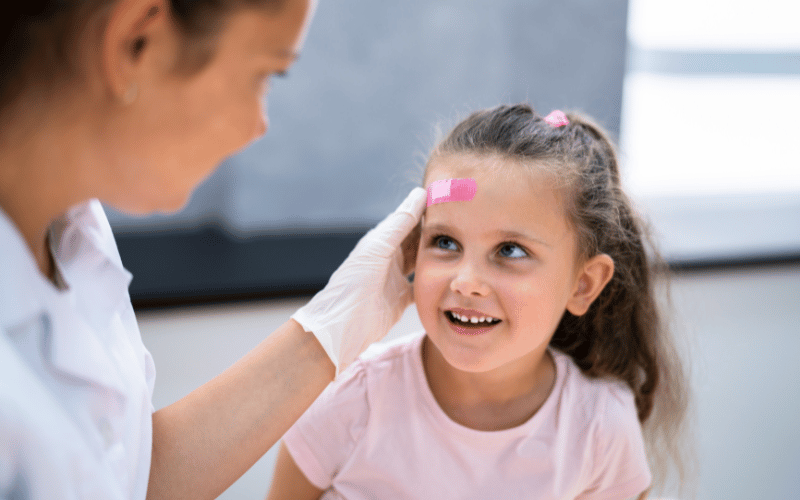Sign 10: Slow Healing of Cuts and Wounds

Slow healing of cuts and wounds is a telltale sign of Type 2 diabetes in children, one that can easily go unnoticed until a minor injury lingers longer than expected. The body’s ability to repair itself is compromised in diabetes due to a combination of poor circulation and high blood sugar levels, which impair the functionality of white blood cells and reduce the efficiency of the healing process. For children, whose lives are typically marked by the occasional scraped knee or paper cut, a prolonged healing duration can be a subtle clue to a deeper underlying issue. The lag in recovery is not just a nuisance; it poses an infection risk, which can escalate to more severe health concerns.
To comprehend why wounds heal more slowly in diabetic children, it’s essential to understand the pathophysiology involved. High glucose levels in the bloodstream can stiffen arteries and cause the walls of blood vessels to build up with fatty deposits, narrowing them and thus impeding blood flow. This reduced circulation means fewer nutrients and oxygen reach the site of the injury, which is vital for healing. Furthermore, elevated sugar levels can diminish the function of red blood cells that carry nutrients to the tissue, and suppress the immune response needed to fight off bacteria and infection at the wound site.
The complications from poor wound healing in diabetic children can be serious. Open wounds are vulnerable to infections, which diabetic children are less equipped to combat. A minor cut can turn into a significant medical issue if an infection takes hold and spreads. In the most severe cases, untreated infections can lead to systemic health issues or the need for hospitalization. It is a slippery slope that starts with a simple graze and can potentially lead to a life-threatening condition if the diabetes is not adequately controlled.
The impact of this symptom on a child’s day-to-day life is not to be underestimated. Parents may become overprotective, limiting their child’s physical activities to prevent injuries, which can lead to feelings of isolation or difference among peers. Moreover, children may develop a fear of engaging in normal play or sports, which can further isolate them and affect their social development and physical health. It is crucial for parents to educate their children on the importance of taking care of their bodies and understanding their unique health requirements without instilling undue fear or anxiety.
Effective management of slow healing wounds involves a multipronged approach. Rigorous control of blood sugar levels is paramount to reduce the risk of complications. Parents and caregivers must ensure that the child adheres to their diabetes management plan, including medication, diet, and exercise. It’s also essential to practice proper wound care – cleaning and dressing any injuries promptly and observing them for signs of infection. In some cases, doctors may recommend additional supplements or topical treatments to support wound healing. Through diligent care and monitoring, the risks associated with slow healing can be significantly mitigated, safeguarding the child’s health and well-being. (10)